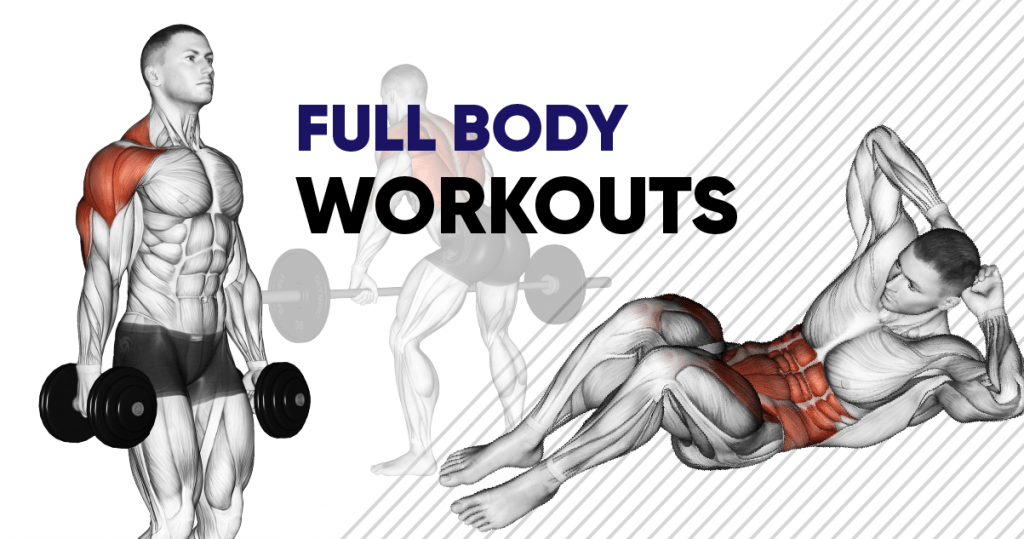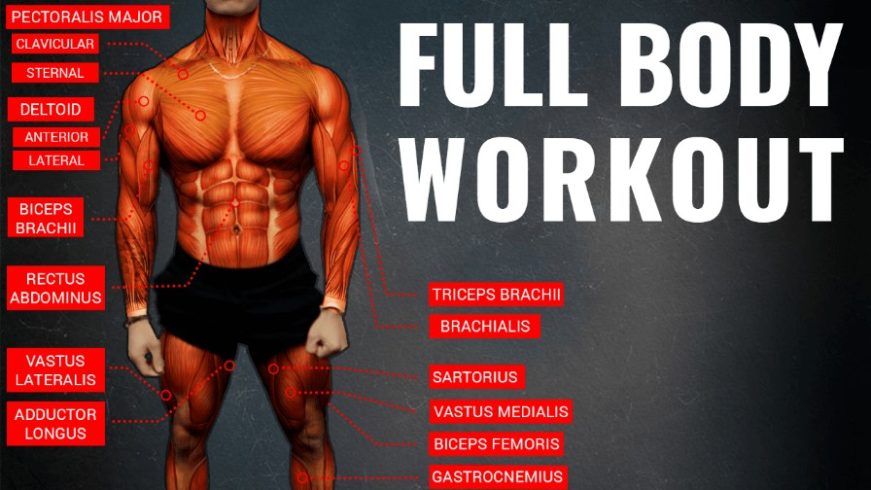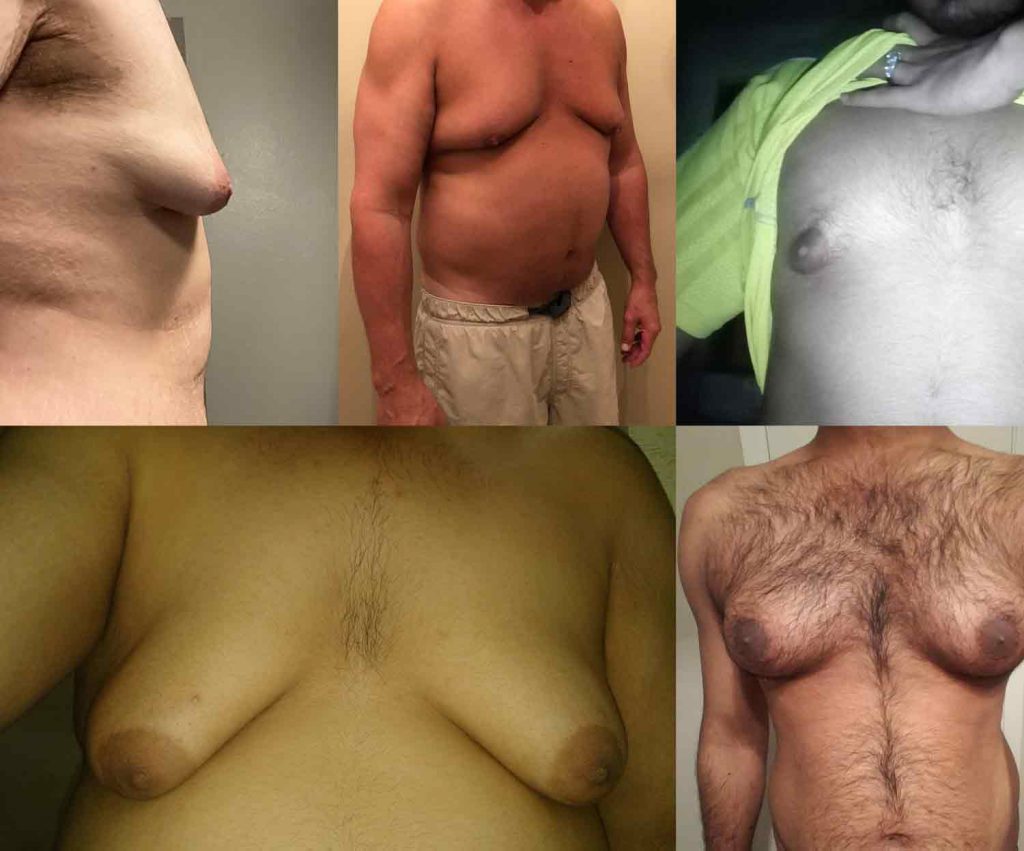Despite the fact that both approaches to strength training have existed for a long time and have shown their effectiveness, there are still discussions among the industry’s experts about which type of training is better. Let’s try to figure it out.
For those who are still confused in the terminology, we remind you that full body workouts aims to hit all of the major muscle groups within one workout.
There are six major muscle groups in the human body: Back, Chest, Shoulders, Arms, Legs and Abdominals.
Let’s consider as an example Arnold Schwarzenegger’s Golden six exercises to hit all the muscle groups:
1. Barbell Squats 4 x 10
2. Wide Grip Bench Press 3 x 10
3. Pull-Ups 3 x Maximum to failure
4. Military Press 4 x 10
5. Barbell Curl 3 x 10
6. Abdominal Crunches 3 x Maximum to failure

PHUL, is a type of training which blends power exercises with size building principles, for the athlete to grow stronger and bigger. There are many types of such training and this can vary depending on the frequency of training as well as the areas that are targeted, with personal preferences.
The simplest example of such a training, suitable for beginners, is a three-day PHUL:
Day 1: Upper body: bench press / row exercises (Shoulders, Back, Arms, Chest).
Day 2: Lower body: squats and its variations/ deadlift and variations (Legs, Buttocks, Abs).
Day 3: Rest
Full Body Workout Advantages:
1. Greater anabolic response and rapid progress
Until the 60s-70s, all of the outstanding bodybuilders, including Arnold Schwarzenegger, Steve Reeves and Reg Park, trained using the full-body training system.
And although now bodybuilders look bigger than half a century ago, we must take into account that sports pharmacology is a rapidly evolving industry.
Thus, the research shows an increase in protein synthesis within the muscle groups, 36 hours after a power load exercise. Due to this, there is rapid growth within muscle and strength indicators. After this period, the process of protein synthesis within these muscles slows down again.
Let’s say you train according to the full-body program three times a week. This will increase protein synthesis throughout the whole body, three times a week. If the three days a week you perform exercises according to the split training program, then each separate group is loaded only 1-2 times a week and accordingly, the response of increased protein synthesis will occur less often. Thus, by training the muscle groups 2-3 times a week instead of one, you can achieve greater results due to this process.
It is worth noting, that if you are an enthusiastic athlete and already spend five, six or even seven days a week in the gym and also hit each muscle group two or three times a week, then this feature will not be as applicable to you.
2. Quality repetitions
As an example, you can hit the pectoral muscles with five sets of bench press in a full-body workout, followed by chest exercises, which include; incline bench press, dumbbell fly and push-ups, i.e. the load will be significantly higher than with the PHUL workout.
On the other hand, this way you will hit the selected muscle groups and achieve their failure. The problem here is that for most of you, five sets will be enough to fatigue your muscles, and you will not be able to maintain the necessary intensity needed to perform the remaining exercises with maximum efficiency.
In a full-body workout, you can make the most of each exercise, as well as home in on your technique and improve the mind to muscle connection, which is important for beginner athletes or bodybuilders.
3. Time saving
An hour-long workout three times a week is enough to keep your body in good shape. The focus is on the most effective, usually multi-joint exercises.
4. More effective for weight loss
As a rule, full-body workouts consist of compound exercises and hit major muscle groups, which means that you will spend more energy within such a workout, which is an advantage for those who want to lose weight.
5. It is easier to build a training program and follow it
This is especially true if you are a regular gym-goer or if strength training is not the main type of your physical activity. So you will ensure that you maintain a good shape, evenly building all of the muscles together. It is also easy to build a circuit workout training, which helps save more time, since instead of rest, you will move on to training the next muscle group. In addition, this workout will not allow you to “cool down” and you will burn even more energy while maintaining the pulse rate within the fat-burning zone, thus combining strength and cardio training together.

P.H.U.L. Advantages:
1. Less stress, with no overtraining
As athletes are gaining more training experience, the intensity of training increases. The recovery capacity of the body also increases, but still it has certain limitations. By training each muscle separately with heavy weights on different training days, you can achieve greater muscle overload, which promotes better and faster muscle growth and strength. After that, there is usually a week of rest for these targeted muscles, and then target training towards other muscles.
2. Helps target problem areas
The undoubted advantage of PHUL training is that you can build the shape of your body while targeting these problem areas and tone lagging muscles.
3. Helps get various goals
PHUL is easier to adapt, if your goal is not just to strengthen and tone the muscles, but to achieve hypertrophy of a particular muscle group. This training helps to hit each muscle group individually. Thus, if you try to work on the strength in full body workouts, the training will take more than two hours, while in PHUL we divide the load by days.
4. You can train every day
If you can’t imagine a day of your life without being in a gym, then separated load will also be quite reasonable. This way, you will avoid overtraining and give the muscles a proper recovery period.
Conclusion
It is difficult to say which type of workout is better. Both approaches have pros and cons. However, the full body workouts suit athletes of all fitness levels, especially beginners. PHUL is designed for those who already have experience in various types of training, especially strength, so you should not start with it.
Also, one should take into account the psychological factor, because some people like the feeling of fatigue after training while others enjoy the energy-boosting effect. With the correct approach, you can get impressive results using both of these methods.
Of course, no one forbids combining and alternating them or taking advantage of both types of training. For example, you can use two days for PHUL, and do a full body workout on the third day. For your convenience, you can find ready-made training programs, which will allow you and your body to train even more effectively. We wish you success and progress in your trainings plans and goals!


